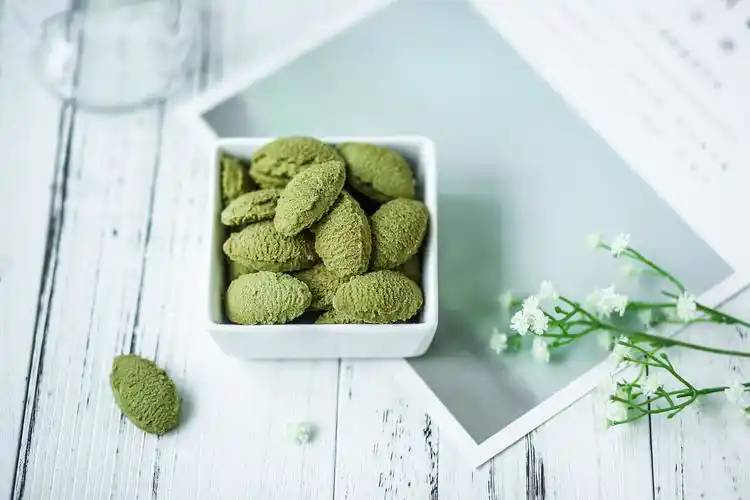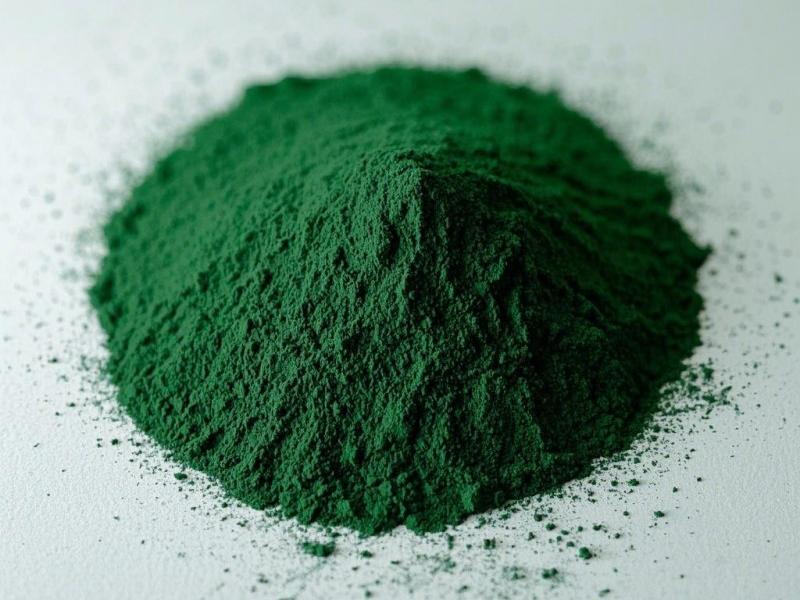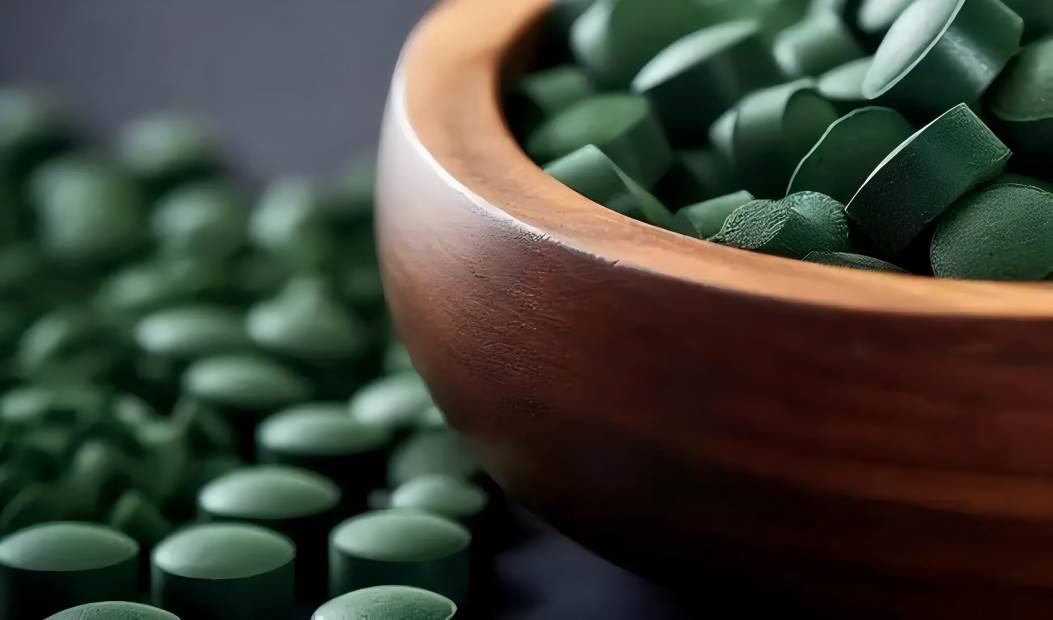What Is the Use of Spirulina?
Spirulina is a new type of high-quality phycobiliprotein with “medicinal and food properties” that has high nutritional, health and medicinal value. It has been hailed as “the ideal food of the 21st century” by the Food and Agriculture Organization (FAO) and “the best human health product of the 21st century” by the World Health Organization (WHO) due to its rich nutritional value[1]. In recent years, the research, development and application of spirulina has attracted widespread attention from researchers. Numerous studies have shown that In addition to containing a large amount of protein, spirulina also contains a relatively large amount of bioactive ingredients, such as spirulina polysaccharide (PSP), β-carotene, phycobiliprotein, γ-linolenic acid, endogenous enzymes, etc., which give spirulina the physiological effects of improving immunity, anti-aging, lowering blood lipids and blood pressure, promoting protein synthesis, and fighting cancer. Spirulina has a wide range of applications in functional foods and traditional Chinese medicine.
1 The nutritional value of spirulina
Spirulina is a high-protein, low-fat, low-cholesterol, low-calorie nutritional food that provides essential micronutrients for human life activities. Spirulina plant protein content is as high as 50-75%, equivalent to 1.7 times that of soybeans, 6 times that of wheat, 9.3 times that of corn, 3.1 times that of chicken, 3.5 times that of beef, 3.7 times that of fish, 7 times that of pork, 4.6 times that of eggs, 2.9 times that of whole milk powder, and the protein it contains is all high-quality protein that is easy to absorb. It contains a complete range of essential amino acids for the human body, and the ratio of essential amino acids it contains matches the optimal protein amino acid composition ratio stipulated by the United Nations Food and Agriculture Organization. It is the ideal protein source for humans [2].
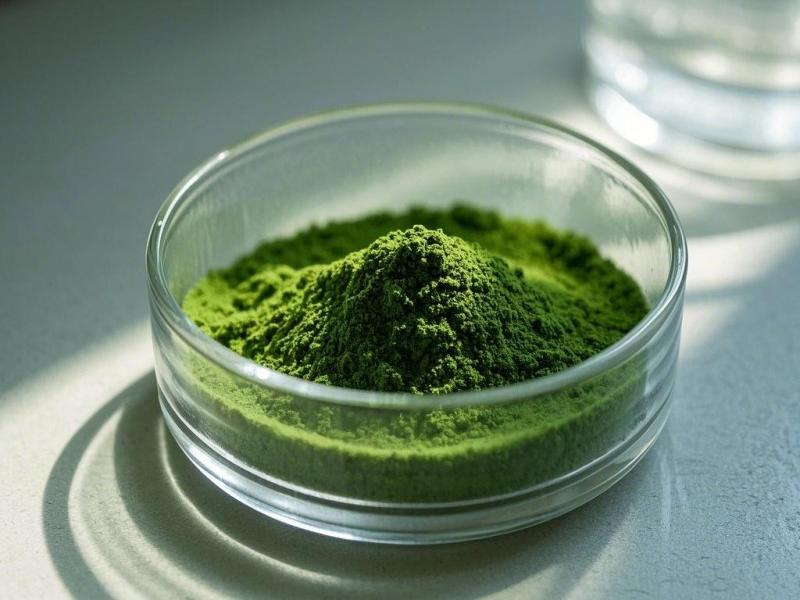
Spirulina contains very few saturated fatty acids and up to 1.7% unsaturated fatty acids, especially linolenic acid, which is 500 times higher than in human milk. Spirulina has 2-4% cellulose, and its cell wall is composed of collagen fibres and proteins, with an absorption rate of up to 95%. The fat content is only 4-6%. Spirulina contains 12 minerals, 8 vitamins and a variety of bioactive substances. The digestibility of the algae is as high as 84%, which is much higher than the 73.6% of chlorella, which is known as the food of the universe [3]. Because spirulina contains the most abundant, comprehensive and balanced nutrients, nutritionists call it the “nutritional champion of the earth” and the “life nutrition bank” [4].
2 Health benefits of spirulina
2.1 Boosts the immune system
Spirulina powder contains a water-soluble polysaccharide called spirulina polysaccharide, which has strong biological activity. Research on spirulina polysaccharide has focused mainly on its immune-enhancing properties. Its mechanism of action is related to its ability to enhance the proliferation of bone marrow cells, promote the growth of immune organs and promote the biosynthesis of serum proteins. Zhang Zhengyu et al. proved through experiments that spirulina has a good immune function when treating chronic hepatitis B in the elderly. This conclusion was confirmed in experiments by He Lianfu et al. and, in combination with transfer factors, spirulina not only improved the nutritional status of the body, significantly reducing the incidence of adverse reactions to anti-tuberculosis drugs, but also synergistically enhanced the cellular immune capacity of patients and improved the cure rate [5]. Zhu Meiju et al. showed that long-term high-load training can reduce the weight of the thymus and spleen, and lower the thymus index and spleen index, while spirulina and its compound can resist the damage to the body's immune organs caused by long-term high-load training [6].
2.2 Antitumor
The mechanism of action of anti-mutation and anti-cancer drugs is related to DNA repair. Spirulina's algal polysaccharides, β-carotene and phycocyanin all have this effect, so spirulina plays an important role in anti-tumor and cancer prevention. Studies have found that the survival rate of mice with lung cancer that have been fed phycocyanin for 6 weeks is 90%, while the control group only has a 25% survival rate. Spirulina polysaccharide 200mg/kg can significantly inhibit the proliferation of ascites-type hepatoma cells in mice, thereby inhibiting cancer cell DNA synthesis. Spirulina polysaccharide has a significant inhibitory effect on breast cancer cells and leukemia cells, and also has the effect of significantly increasing the thymus index and spleen index of tumor-bearing mice.

Ding Shouyi et al. found that when studying the effect of spirulina polysaccharides on the in vitro growth of human cervical cancer Hela cells, the cell survival rate gradually decreased and the inhibition rate gradually increased with the increase in spirulina polysaccharide concentration and the extension of culture time [7]. The mechanism of the anti-tumor immune effect of phycocyanin and spirulina polysaccharides is that the protein or polysaccharide has a mitogenic effect. After entering the body, it stimulates T cells and B lymphocytes, causing them to activate, proliferate and differentiate into effector T cells and plasma cells, which produce more antibodies. This enhances the body's cellular and humoral immune functions and comprehensively strengthens the body's immunity.
2.3 Prevention and treatment of hyperlipidemia
Spirulina contains a large amount of unsaturated fatty acids, of which linoleic acid and linolenic acid account for 45% of the total fatty acids. These two are important components of cell membrane phospholipids in mitochondria, which can lower cholesterol, prevent hyperlipidemia, and avoid damage to the normal physiological function of the cardiovascular system [8-9]. In clinical practice, Zhang Zhen used spirulina capsules to treat hyperlipidemia. The results showed that the lipid-lowering efficacy in 157 cases reached 47.4%, and the total efficacy was 76.0%. At the same time, no adverse reactions were found during the entire treatment process, and there was no damage to liver or kidney function. Spirulina is considered to be a good lipid-regulating agent.
2.4 Anti-fatigue
After a certain amount of exercise, the body will produce excess lactic acid. Spirulina is an alkaline food that can neutralize the excess lactic acid produced in the body during fatigue, thereby playing an anti-fatigue role. Spirulina is also rich in aspartic acid, which has the effect of directly combating fatigue and restoring physical energy. Zhang Xinghai and others took long-distance female runners as the subjects of their observation. After taking spirulina capsules, they found that spirulina can significantly reduce the blood lactate and blood urea nitrogen levels after exercise.
The heart rate and systolic blood pressure of the experimental group were significantly lower than those of the control group during the recovery period. The results of the experiment show that spirulina can promote the recovery of the body's heart rate and systolic blood pressure after exercise, speed up fatigue recovery, and have a good promoting effect on cardiovascular function [10]. Wan Xiaojin et al. showed that after feeding different doses of spirulina, the swimming time of mice under load increased significantly compared to the control group, and their survivability under cold and high temperature conditions was significantly enhanced. This proves that spirulina can significantly improve the exercise endurance of mice and has the effect of enhancing the body's resistance to fatigue [11].

2.5 Preventing anemia
Spirulina can effectively enhance anaerobic fermentation and aerobic metabolism, producing more ATP to meet the needs of normal transmembrane ion concentration gradients and maintain cell stability. It can promote iron absorption, increase plasma ferritin, effectively correct anemia, and protect against blood cell regeneration dysfunction. It can improve hematopoietic repair function and immune function [12]. Spirulina contains up to 190–550 mg/kg of iron, 23 times more than spinach, and is present in the form of ferritin, which is easily digested and absorbed. Regular consumption can effectively prevent and treat iron deficiency anemia. In addition, the rich chlorophyll content in spirulina further ensures the effective absorption of iron. After being ingested by the body, chlorophyll is quickly converted into heme, which improves blood circulation, which is beneficial for the treatment of heart disease, hypertension, and cardiovascular system diseases.
3 Development and application of spirulina
Spirulina is rich in nutrients and a variety of bioactive ingredients, such as algin, β-carotene, and phycocyanin, which are the basis of the health-promoting properties of spirulina health foods. Food additives developed using spirulina can be widely used in the food industry. At the same time, spirulina is also increasingly being used in the development and application of healthcare products and functional foods due to its unique nutritional and healthcare functions.
3.1 Spirulina food additives [13
3.1.1 Beta-carotene
Beta-carotene extracted from spirulina is a high-value product that has many advantages over chemically synthesized beta-carotene, such as the cis-isomer content of up to about 50%, while the synthetic cis-isomer only accounts for about 20%. Therefore, the biological and health functions of natural beta-carotene are unmatched by chemical synthesis. Beta-carotene can be used in the food industry as a food colouring agent or nutritional and health-enhancing fortifier in ice cream, beverages, cheese, candy, meat products, egg products, noodles, etc.
3.1.2 Phycocyanin
Phycocyanin, also known as phycobiliprotein, is mainly found on the membrane of the endoplasmic reticulum in cyanobacteria cells. It is a key pigment in the photosynthetic reaction of algae. As a food additive, it is widely used in coloring ice cream, candy, pastries and other foods. It is also used in clinical medicine as an immunofluorescence agent and antitumor drug.
3.2 Functional food development
3.2.1 Antioxidant and UV protection
Spirulina's phycocyanin plays an important role as an antioxidant in many biological systems. Liu et al. studied spirulina fermented by Lactobacillus and found that during the fermentation process, after the cell wall was biodegraded, the total phenolic substances increased by 1.73 times, and the released small molecules had stronger antioxidant activity. At the same time, compared with natural spirulina, spirulina fermented by lactic acid bacteria contains more phycocyanin converted into phycobilin, which increases the antioxidant content and also provides protection against ultraviolet rays [14]. Spirulina is an important source of phycocyanin, which has significant antioxidant properties and is also crucial for skin health. Therefore, the development of antioxidant functional foods and UV protection products using spirulina has good application prospects [15-16].
3.2.2 Food for diabetics
The nutritional composition of spirulina meets the dietary requirements of diabetic patients, i.e., low sugar, low fat, high protein and high vitamins, so it has a more obvious effect on diabetes [13]. Kamalpreet et al. studied the nutrition and health of non-insulin-dependent diabetic people after consuming spirulina. The results showed that spirulina contains a lot of iron that the human body can use, and supplementing 2g of spirulina per day can improve the hemolytic condition of this type of people. In addition, spirulina's phycocyanin can strengthen the body's immune system and inhibit diabetic complications, improve physical health, and enhance vitality [17].

3.2.3 Improve arsenic poisoning symptoms
After entering the human body and being absorbed, arsenic destroys the redox capacity of cells, affects normal cell metabolism, and causes tissue damage and bodily disorders. Rahman et al. studied the body repair of arsenic-poisoned people of different ages, genders, and nutritional status after taking spirulina. The results showed that after taking spirulina, the health of 60% of the arsenic-poisoned people improved significantly. The antioxidant properties of spirulina can help to alleviate the cytotoxicity caused by arsenic [18].
3.2.4 Other functional foods
Spirulina can alleviate the effects of arthritis by regulating the activity of synovial fluid, inhibiting the stimulation of joints by external sensitive substances, and influencing the interaction mechanism and functional mechanism [19]. Spirulina contains β-carotene as a pre-existing substance that is converted into vitamin A. The demand for it is constantly increasing and it is commonly used in a variety of vitamin premixes and functional foods [20]. Nakashima et al. showed that β-carotene in spirulina can reduce the risk of cancer and other complications [21].
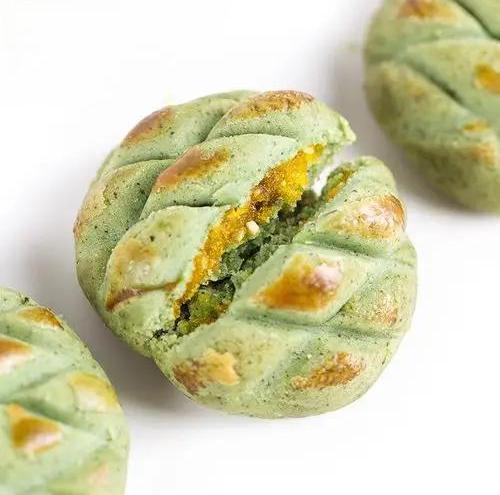
4 Conclusion
Spirulina is rich in nutrients, comprehensive and balanced, and contains a variety of bioactive ingredients. So far, the research on the health and functional value of algae resources has not been in-depth enough, but its functional applications in immune regulation, anti-cancer, anti-virus and blood biochemistry are increasingly attracting the attention of researchers [22]. “Functional foods” are hailed as the food of the 21st century and have huge potential for development. As research progresses, the nutritional and health benefits and physiological functions of spirulina will be fully explored, and a wide range of spirulina-based functional foods and spirulina food additives will be developed. These will have a positive effect on human nutrition and health and have broad prospects.
References
[1] Xu Haibin, Chen Yan, Li Fang, et al. Investigation of microcystin contamination in raw materials and products of spirulina health food [J]. Health Research, 2003, 32 (4): 339-343.
[2] Fang Xixiu. Nutritional function and processing and production technology of spirulina [J]. World Agriculture, 2003(6): 42-43.
[3] Niels T E. Product ion of phycocyanin: a pigment with applications in biology, biotechnology, foods and medicine [J]. Microbiology Biotech, 2008(80): 1-14.
[4] Zhang Xiaoyan, Liu Nan, Zhou Deqing. Analysis of the current situation and quality and safety of spirulina food [J]. Packaging and Food Machinery, 2012, 30 (4): 50-53.
[5] Sun Jie, Lu Shengmin, Tao Ningping. Nutritional value and health benefits of spirulina [J]. China Fisheries, 2006 (5): 76-77.
[6] Zhu Meiju, Li Hong. The effect of spirulina and its compound on the immune organs and T cell subsets of exercised mice [J]. Journal of Guangzhou Sport University, 2004, 24 (5): 5-38.
[7] Ding Shouyi, Yang Ying. Effect of spirulina polysaccharide on the in vitro growth of human cervical cancer Hela cells [J]. Journal of Qingdao University School of Medicine, 2002, 38(4): 346-347.
[8] Juarez M A , Mascher D , Torres P V , et al. Effects of dietary spirulina on vascular reactivity[J]. J Med Food,2009,12(1):15-20.
[9] Park H J , Lee Y J , Rye H K , et al. A randomized double-blind placebo-controlled study to establish the effects of spirulina in elderly Koreans[J]. Ann Nutr Metab,2008,52(4):322-328.
[10] Zhang Xinghai, Feng Xinyuan, Zhao Lin, et al. Spirulina nutrition and exercise-induced fatigue [J]. Chinese Tissue Engineering Research and Clinical Rehabilitation, 2008, 12(33): 6575-6577.
[11] Wan Xiaojin, Jin Lei. Research on the anti-fatigue effect of spirulina [J]. Strait Pharmacy, 2010, 22 (11): 7-9.
[12] Su Dalong. Research progress of spirulina [J]. Heilongjiang Traditional Chinese Medicine, 2006 (3): 44-46.
[13] Wu Wenlong, Yang Zhijuan. Functional factors and research and development progress of spirulina health food [J]. Food Research and Development, 2006, 27(2): 129-131.
[14] Liu J G,Hou W C,Lee S Y,et al. Antioxidant effects and UVB protective activity of Spirulina (Arthrospira platensis)products fermented with lactic acid bacteria[J]. Process Biochem,2011(46):1405-1410.
[15] Chen T ,Wong Y S ,Zheng W. Purification and char- acterization of selenium containing phycocyanin from selenium enriched spirulinaplatensis [J].Phytochem, 2006(67):2424-2430.
[16] Subhashini J , Reddanna P , Mahipal S V K,et al. Molecular mechanisms in C -Phycocyanin induced apoptosis in human chronic myeloid leukemia cell line-K562[J]. Biochem Pharm,2004(68):453-462.
[17] Kamalpreet Kaur , Rajbir Sachdeva , Anita Kochhar. Effect of spirulina supplementation on the nutrient ad- equacy and health status of Non -Insulin -Dependent Diabetes Mellitus(NIDDM) male subjects[J]. Ethno- Med,2009,3(2):119-126.
[18] Rahman M H ,Mislam A Z M ,SikderI S. Dynamics of spirulina in promoting health benefits for arsenicosis patients[J].Journal of Bangladesh College of Physicians and Surgeons,2008,26(1):14-21.
[19] Patro N , Sharma A , Kariaya K , et al. Spirulina platensis protectsneurons via suppression of glial acti- vation and peripheral sensitization leading to restora- tion of motor function in ollageninduced arthritic rats[J]. Indian J Exp Biol,2011(49):739-748.
[20] Rao A V ,Rao L G. Carotenoids and human health[J]. Pharmacol Res,2007(55):207-216.
[21] Guedes A C ,Amaro H M ,Malcata F X. Microalgae as sources of carotenoids [J].Marine Drugs,2011(9): 625-644.
[22] Marzieh S ,Kianoush K D. The Potential health bene- fits of algae and micro algae in medicine: A review on spirulina platensis [J]. Current Nutrition & Food Science,2011(7):279-285.


 English
English French
French Spanish
Spanish Russian
Russian Korean
Korean Japanese
Japanese